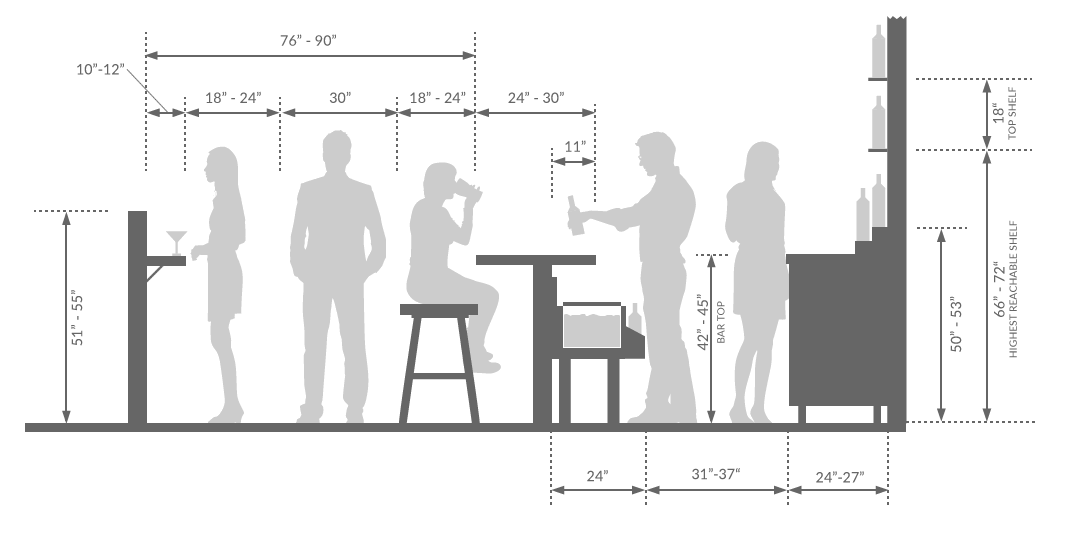Commercial counter design
Designing a cafe or bar counter presents unique challenges in terms of both functionality and aesthetics. The counter serves as the focal point of the space and needs to be both inviting and functional to meet the needs of customers and staff.
Layout
One of the primary challenges of designing a cafe or bar counter is creating a layout that maximises space and efficiency.
The counter should provide enough space for customers to place orders and for staff to prepare and serve drinks and food. The placement of equipment, such as coffee machines and refrigerators, should be carefully considered to ensure they are easily accessible but do not impede the flow of traffic.
In addition to providing sufficient space for customers and staff, it is also essential to include the necessary equipment to ensure the efficient operation of the counter. For example, a cafe or bar counter may require equipment such as espresso machines, blenders, grinders, refrigerators, and sinks.
The type and size of the equipment will depend on the specific needs of the business, such as the volume of orders, the variety of drinks and food items offered, and the available space. It is important to choose equipment that is of high quality, reliable, and easy to use, as this can save time and money in the long run.
behind the bar set up example
standard bar clearances
Finishes
Another key consideration is the choice of materials and finishes. The counter should be durable and easy to clean, while also reflecting the overall design aesthetic of the space. Materials such as stainless steel, concrete, stone and natural wood are popular choices for their durability and versatility.
In terms of aesthetics, the design of the counter should complement the overall theme and style of the cafe or bar. For example, a rustic-style bar might feature a reclaimed wood counter with metal accents, while a modern cafe might opt for a sleek and minimalistic design with clean lines and a neutral colour palette.
Jetlag Tea & Wine Bar / Mimosa Architekti
Primo Cafe Bar / Dittel Architekten
Coperaco Cafe / Concrete Amsterdam
Lighting
Lighting is also a crucial factor to consider when designing a cafe or bar counter. Proper lighting can enhance the ambiance of the space and draw attention to the counter, while also providing adequate lighting for staff to work.
In addition to the practical aspect of providing adequate lighting for staff to work, decorative lighting can also play a significant role in creating an inviting atmosphere for customers. One approach to decorative lighting is to use directional lighting to highlight specific areas of the counter or bar, such as displays of drinks or food items.
Directional lighting can also be used to create a sense of depth and texture, emphasizing the different materials used in the counter's construction or the details of the bar's design. For example, spotlights or track lighting can be used to highlight the unique grains and textures of a wooden bar top or draw attention to the intricate designs of a tiled backsplash.
Another approach to decorative lighting is to use fixtures that incorporate unique shapes, colors, or patterns. This can include pendant lights with colorful glass shades or sculptural fixtures that create an artistic focal point above the counter.
Ultimately, the key to effective decorative lighting is to find a balance between form and function. By incorporating lighting that both enhances the ambiance of the space and provides adequate lighting for staff and customers, designers can create a cafe or bar counter that is both visually appealing and practical.
Branding
Fresh Milk Lab / nteam.design Kiev
Finally, it's essential to consider the branding and messaging of the cafe or bar. The counter should align with the brand's values and communicate the desired message to customers.
For example, a cafe focused on sustainability might incorporate eco-friendly materials into the counter design, while a bar focused on craft cocktails might feature a visually appealing display of ingredients.
















